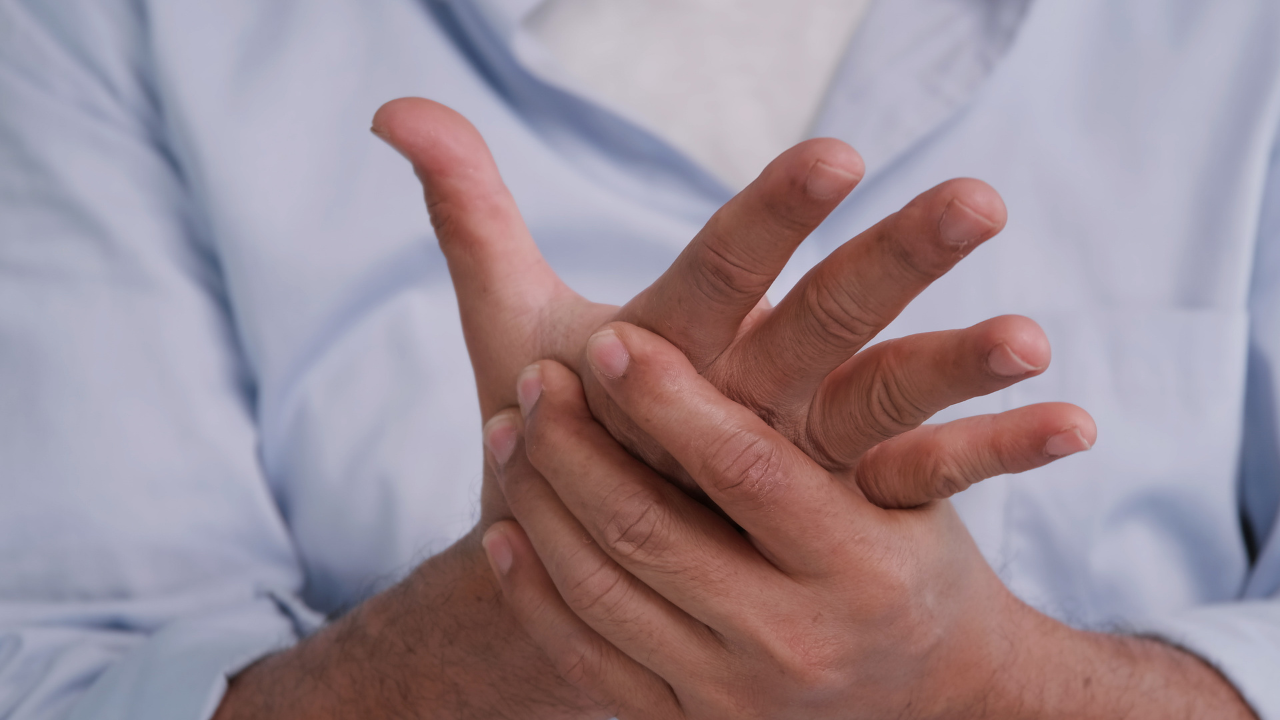A 2024 study published in NIH found that university students who used their smartphones for around five hours a day were more likely to feel pain in their thumbs, palms, and wrists. However, the more concerning part of the study was that over time this toll can lead to stiffness, reduced grip strength, and even long-term hand strain. Since our hands do so much of the mobile work, giving them a little care can go a long way. Simple hand exercises not only relieve pain and stiffness but also improve flexibility and circulation, helping your muscles recover from overuse.
Why the pain happens

A 2024 PubMed Central study found that both duration of use and posture of holding significantly impacted pain prevalence. Beyond that research from Yale Medicinepoints toward the link between smartphone use and musculoskeletal strain from heavy tapping, static grip, unsupported wrists. All these combine to increase load on small hand tendons and joints. The ergonomics site at Yale Medicine explains how even “texting thumb,” wrist discomfort and trigger-finger-type complaints are emerging in phone-heavy users. The good news is that target exercises with smart use of habits can make a difference. Below are five exercises that can instantly help relieve the discomfort and pain in hands and fingers from excess smartphone usage.
5 simple exercises that can help relieve hand and finger pain

1. Wrist flexor & extensor stretch
- Extend one arm forward, palm down and fingers pointing outward. With the other hand, gently pull the fingers/back of the hand toward you until you feel a stretch across the top of the forearm (wrist extensor stretch). Hold 20-30 seconds.
- Then, turn the palm up and gently pull the fingers back toward you to stretch the underside (wrist flexor). Hold 20-30 seconds.
- Repeat 2-3 times on each hand.
This hand exercise helps relieve tension in the forearm muscles and tendons that are engaged when holding/scrolling your phone for long stretches. 2. Thumb opposition & base-thumb stretch
- With your hand open, touch the tip of your thumb to the tip of your index finger, then middle, ring, little – repeat 5-10 times (thumb opposition).
- Then, using the other hand, gently pull the thumb backwards toward the wrist until you feel a mild stretch at the base of the thumb. Hold for 15-20 seconds. Repeat 2-3 times.
This exercise may benefit as the thumb, especially its base, is heavily used in scrolling, tapping and holding. This mobilises that region and helps relieve built-up stress.3. Tendon gliding exercise
- Start with your fingers straight and hand open.
- Bend just the top two joints of the fingers (keeping the base joints straight) – “table-top” position.
- Then make a full fist (all finger joints bent).
- Then straighten again. Move slowly through these positions 5-8 times.
Tendon gliding exercise can help keep the tendons of the fingers and palm moving smoothly, reducing stiffness or “snagging” from repetitive small-motions like scrolling.4. Forearm/handshake & wrist rotation break
- Let your arms hang by your sides or rest your forearms on a table. Shake out your hands gently as if shaking off water, ~10-15 seconds.
- Then rotate your wrists: palms up, then palms down, ~10 reps.
- If you habitually use one hand for your phone, switch hands for this break.
This hand exercise breaks up the static load of holding a device, improves blood flow and releases built-up tension in the wrist/forearm.5. Finger spreads & gentle fists
- Start with your hand open, spread your fingers widely and hold for 3-5 seconds, then relax. Repeat 10 times.
- Then form a gentle fist (thumb wrapped across the outside of the fingers), hold ~5 seconds, then open fingers fully. Repeat 10 times.
This exercise can help counter the constant small motion of tapping by engaging the fingers in full range, improving circulation and flexibility.
Smart tips to maximise benefits
- Take frequent breaks from using smartphone
- Use alternate hands or change hand position
- Avoid holding the phone in a way that bends the wrist
- Rest the device on a cushion or surface to support the hands
In case of persistent ache, stiffness or tingling consult with a healthcare professional to prevent serious issues.

